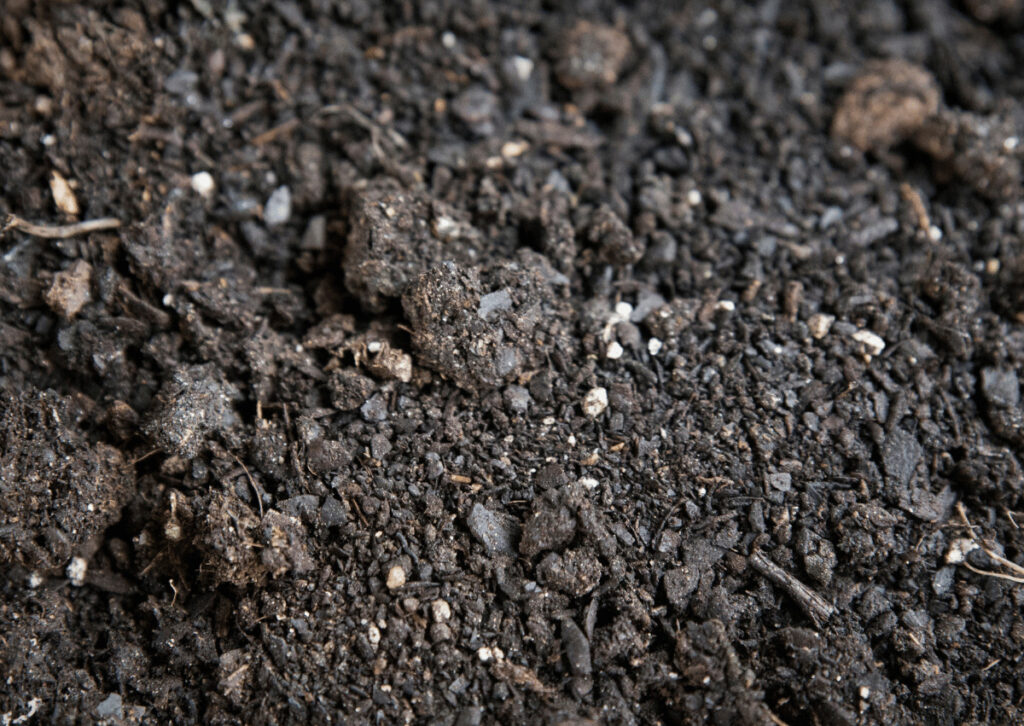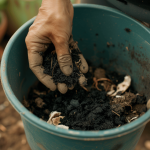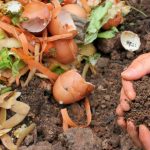Terra Preta: The Amazon’s Ancient Secret for Boosting Soil Fertility

Terra Preta, also known as Amazonian Dark Earth, is a type of soil found in the Amazon Basin. It is renowned for its rich nutrient content and remarkable fertility. Unlike the surrounding infertile soils, Terra Preta is dark, loamy, and teeming with microbial life.
The original Terra Preta was most likely created by pre-Columbian Indians from 500 to 2500 years B.P. and abandoned after the invasion of Europeans.
The secret to its fertility lies in its unique composition. It contains high levels of charcoal, pottery shards, compost, and manure. This combination of ingredients helps the soil retain nutrients and moisture, making it ideal for plant growth.
The Problem with Poor Soil
Poor soil can be a significant obstacle for gardeners and farmers. It often lacks the necessary nutrients for plant growth and can struggle to retain moisture. This can lead to stunted plant growth, reduced yields, and a frustrating gardening experience.
The Potential of Terra Preta for Improving Poor Soil
Recent studies have shown that even a small addition of Terra Preta to poor soil can significantly improve its fertility. The charcoal in Terra Preta helps to increase the soil’s capacity to retain nutrients and water. This can lead to improved plant growth and increased crop yields.
This unique soil, rich in organic matter and nutrients, has been hailed as a game-changer for sustainable agriculture, particularly in areas where the soil quality is less than ideal.
The Science Behind Terra Preta
The secret to Terra Preta’s fertility-enhancing properties lies in its unique composition. This soil is rich in biochar, a form of charcoal that is produced through the slow burning of organic waste. Biochar has a porous structure, which increases the soil’s capacity to retain water and nutrients. This means that plants grown in Terra Preta have a constant supply of the nutrients they need to thrive.
Moreover, the biochar in Terra Preta provides a habitat for beneficial soil microorganisms. These microorganisms play a crucial role in nutrient cycling, helping to convert the nutrients in the soil into forms that plants can easily absorb.
The Impact of Terra Preta on Poor Soil
Recent studies have shown that incorporating even a tiny amount of Terra Preta into poor soil can have a significant impact on its fertility. One study found that adding just 20% Terra Preta to poor soil resulted in a 43% increase in corn yield. This is a remarkable improvement, particularly considering the challenges associated with improving poor soil.
The benefits of Terra Preta are not limited to increased crop yields. This soil also improves the structure of poor soil, making it more friable and easier to work with. It also enhances the soil’s water-holding capacity, reducing the need for frequent watering.
Terra Preta and Sustainable Agriculture
The use of Terra Preta aligns with the principles of sustainable agriculture. By improving soil fertility naturally, Terra Preta reduces the need for synthetic fertilizers, which can have harmful environmental impacts. Moreover, the production of biochar, a key component of Terra Preta, involves the recycling of organic waste, further contributing to the sustainability of this practice.
Terra Preta offers a promising solution for improving poor soil. Its unique properties not only enhance soil fertility but also promote sustainable agriculture practices. By incorporating Terra Preta into their soil management strategies, gardeners and farmers can improve the productivity of their land while also contributing to environmental sustainability.
For more information on sustainable soil improvement techniques, our article on Nitrogen Fixing Perennials for Zone 7 offers valuable insights.
Creating Your Own Terra Preta
Creating your own Terra Preta, or Amazonian Dark Earth (ADE), can be a rewarding endeavor. Not only does it improve the fertility of your soil, but it also allows you to recycle organic waste, contributing to a more sustainable gardening practice. Here’s a step-by-step guide on how to create your own Terra Preta.
Understanding the Ingredients
The first step in creating Terra Preta is understanding the ingredients. It is made up of four main components:
- Biochar: This is a type of charcoal produced by burning organic matter in a low-oxygen environment. It serves as a habitat for beneficial soil microorganisms and helps the soil retain nutrients and water.
- Compost: This is decomposed organic matter that provides nutrients for plant growth. It can be made from kitchen scraps, yard waste, or manure.
- Pottery shards: In the Amazon, pottery shards are a common component of ADE. They help improve the soil’s structure and water-holding capacity. In a home setting, you can substitute pottery shards with coarse sand or small rocks.
- Rock dust: This is a source of trace minerals that are essential for plant growth. You can obtain rock dust from a garden center or by crushing rocks from your yard.
Step 1: Producing Biochar
The production of biochar is a crucial step in creating ADE. Here’s how you can make biochar at home:
- Collect organic waste: This can be any type of organic matter, such as wood scraps, leaves, or straw. Avoid using treated wood or materials that may release toxins when burned.
- Burn the organic waste: Place the organic waste in a metal container and cover it with a lid that has a small hole. This will limit the amount of oxygen inside the container. Then, burn the container in a controlled fire. The organic waste inside the container will slowly burn, producing biochar.
- Cool and crush the biochar: Once the biochar has cooled, crush it into small pieces. This will increase its surface area, making it more effective at retaining nutrients and water.
Step 2: Preparing the Compost
Compost is another key ingredient. If you don’t already have a compost pile, here’s how you can start one:
- Choose a compost location: This should be a spot in your yard that is easily accessible and has good drainage.
- Collect compost materials: Compost is made from a mix of green materials (such as vegetable scraps and grass clippings) and brown materials (such as leaves and straw). Aim for a ratio of about 2:1 brown to green materials.
- Turn the compost regularly: This will help speed up the decomposition process. Aim to turn your compost pile once every week or two.
Step 3: Mixing the Ingredients
Once you have your biochar and compost ready, you can start creating your Terra Preta:
- Mix the biochar and compost: Aim for a ratio of about 1:1 biochar to compost. This will provide a good balance of nutrients and water-holding capacity.
- Add pottery shards or coarse sand: This will help improve the soil’s structure and water-holding capacity. Aim for about 10% of the total volume of the mix.
- Add rock dust: This will provide trace minerals that are essential for plant growth. Aim for about 5% of the total volume of the mix.
- Let the mix sit: Once all the ingredients are mixed, let the mix sit for a few weeks. This will allow the biochar to absorb nutrients from the compost and the rock dust, and for beneficial microorganisms to colonize the biochar.
Step 4: Using Your Terra Preta
After the mixture has sat for a few weeks, your Terra Preta is ready to use. Here’s how you can incorporate it into your garden:
- Add Terra Preta to your garden beds: You can either mix it into the top layer of your existing soil or use it to fill raised beds. Aim for a ratio of about 10-20% Terra Preta to existing soil.
- Plant your crops: Terra Preta is particularly beneficial for nutrient-hungry crops, but it can be used to grow a wide range of plants.
- Maintain your soil: Over time, the nutrients in the Terra Preta will be used up by your plants. To maintain the fertility of your soil, add more compost and biochar regularly.
Creating your own Amazonian Dark Earth can be a rewarding process. Not only does it improve the fertility of your soil, but it also allows you to recycle organic waste, contributing to a more sustainable gardening practice. By understanding the science and following these steps, you can create your own fertile soil and enjoy the benefits of this ancient Amazonian practice.
For more information on sustainable soil improvement techniques, you might find our article on Composting: Hot vs Cold helpful. It provides a detailed comparison of hot and cold composting methods, both of which can be used in the creation of Terra Preta.
Recent Research and Case Studies on Terra Preta
The potential of Terra Preta to improve poor soil quality and enhance agricultural productivity has been the subject of numerous recent studies. One such study, published in 2022, examined the use of biochar-compost-based amendments, similar to Terra Preta, in improving the productivity of cotton in northern Benin, a region in sub-Saharan Africa known for its low land productivity.
The study found that using a mix of compost and biochar, which is what makes up Terra Preta, greatly improved the growth of cotton plants. In fact, when they added a mix of compost made from cow dung and 15% biochar to the soil, the amount of cotton they harvested increased by 86% compared to soil that didn’t get this special treatment. This shows that Terra Preta could be a really good way to make poor soil better and help plants grow more productively.
Unlocking the Mysteries of Amazonian Dark Earth
While Terra Preta (Amazonian Dark Earth) offers a fascinating glimpse into ancient soil enrichment techniques, the story of Amazonian Dark Earth unveils even more profound insights. In our article, “Exploring the Ancient and Enduring Wonders of Amazonian Dark Earth,” we delve into the remarkable history, formation, and environmental significance of this extraordinary soil. Discover how Amazonian Dark Earth has sustained generations, the innovative methods used by ancient civilizations to create it, and its potential impact on modern sustainable agriculture practices. This comprehensive exploration expands on the concepts introduced in Terra Preta, providing a deeper understanding of ancient soil management and its relevance today.
Read More: Exploring the Ancient and Enduring Wonders of Amazonian Dark Earth
Another study conducted in Brazil evaluated the spatial variability of the physical attributes of Indian Black Earth (another name for Terra Preta) under pasture cultivation. Although the study focused more on the physical attributes of the soil, it underscores the importance of understanding the properties and benefits of Terra Preta in different agricultural contexts.
A third study explored the effect of biochar, lime, and compost on the properties of acid sulphate soil. The researchers found that biochar, a key component of Terra Preta, was effective in improving soil acidity, absorbing heavy metals, and retaining water and nutrients for soil organisms.
A study conducted in 2018 investigated the interaction between biochar and arbuscular mycorrhizal fungi (AMF), important root symbionts of a great majority of terrestrial plants. The researchers found that the establishment of symbiosis with AMF largely mitigated biochar-induced suppression of plant growth and mineral nutrition, mainly by improving plant acquisition of phosphorus 4.
These studies highlight the potential of Terra Preta in improving poor soil conditions, enhancing plant growth and nutrition, and boosting agricultural productivity. They also underscore the need for further research to fully understand the mechanisms through which Terra Preta exerts its beneficial effects and to optimize its use in different agricultural contexts.
A team of Brazilian scientists conducted experiments to see if they could rejuvenate degraded soil by adding ADE. They found that adding just 20% ADE (Amazonian Dark Earth) to degraded soil significantly improved its health and productivity, suggesting that ADE could be used as an additive in reforestation projects worldwide.
Here is a video that talks about this study
Terra Preta and Climate Change Mitigation
Terra Preta has a significant role to play in mitigating climate change. The process of creating Terra Preta involves the production of biochar, a form of charcoal that is produced by burning organic matter in a low-oxygen environment. This process, known as pyrolysis, effectively locks carbon into the soil, preventing it from being released into the atmosphere as carbon dioxide, a potent greenhouse gas.
Moreover, the use of Terra Preta can enhance soil fertility and productivity, reducing the need for synthetic fertilizers. The production and use of synthetic fertilizers are significant sources of greenhouse gas emissions, particularly nitrous oxide, a greenhouse gas that is nearly 300 times more potent than carbon dioxide in terms of its warming potential.
By improving soil health and reducing the need for synthetic fertilizers, Terra Preta can contribute to sustainable agriculture, which is a key component of climate change mitigation strategies. Furthermore, by enhancing the capacity of soils to store carbon, Terra Preta can help to sequester carbon dioxide from the atmosphere, further contributing to climate change mitigation.
Conclusion
This rich, dark soil, known as Amazonian Dark Earth or Terra Preta, has been utilized by indigenous communities in the Amazon for centuries to boost soil fertility and agricultural productivity. Recent studies have highlighted its potential to enhance poor soil conditions, support plant growth and nutrition, and increase agricultural productivity.
Creating this nutrient-dense soil can be a rewarding endeavor. It not only enriches your soil but also promotes the recycling of organic waste, contributing to more sustainable gardening practices. By understanding the science behind this ancient Amazonian soil and following the steps outlined in this article, you can create your own fertile ground and reap the benefits of this age-old practice.
Furthermore, this Amazonian Dark Earth plays a significant role in mitigating climate change. By sequestering carbon in the soil and reducing the need for synthetic fertilizers, it contributes to sustainable agriculture and carbon sequestration, both of which are key strategies in combating climate change.
In conclusion, Amazonian Dark Earth represents a bridge between the past and the future, combining ancient knowledge with modern science to address some of the most pressing challenges of our time, including soil degradation, food security, and climate change. By embracing the lessons of this rich, dark soil, we can cultivate a more sustainable and resilient future for ourselves and generations to come.
From Ancient Soil Secrets to Modern Composting Systems: Discover the Power of Chicken Tractors
You’ve learned about the ancient secrets of the Amazon’s Terra Preta and its incredible impact on soil fertility. Now, it’s time to step into the modern age with an innovative composting system that’s taking the gardening world by storm. Discover the world of Chicken Tractors, a revolutionary method that combines the natural behaviors of chickens with composting processes to create a continuous cycle of fertility for your garden. Whether you’re a backyard gardener, a small-scale farmer, or a sustainability advocate, you’ll find this method a powerful tool in your journey towards more sustainable, efficient, and eco-friendly gardening. Ready to transform your garden into a powerhouse of productivity and sustainability? Click here to learn more about Chicken Tractors, the ultimate composting system for gardeners.




